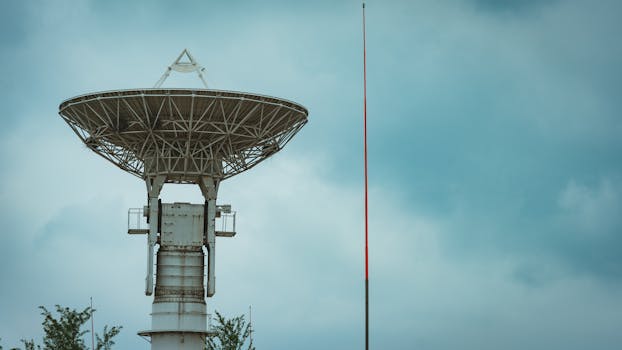The Future of Satellites: Revolutionizing Global Connectivity
The future of satellites is poised to revolutionize global connectivity, enabling faster and more reliable communication networks. With advancements in space technology, satellites are becoming increasingly important for various industries, including telecommunications, navigation, and weather forecasting.

The Future of Satellites: Revolutionizing Global Connectivity
The future of satellites is poised to revolutionize global connectivity, enabling faster and more reliable communication networks. With advancements in space technology, satellites are becoming increasingly important for various industries, including telecommunications, navigation, and weather forecasting. The focus keyword Future of satellites is expected to play a crucial role in shaping the world’s communication landscape.
Satellites have been in use for several decades, but recent advancements in technology have made them more efficient, cost-effective, and accessible. The launch of satellite constellations, such as SpaceX’s Starlink and Amazon’s Kuiper Systems, is expected to provide high-speed internet connectivity to remote and underserved areas around the world. These constellations consist of thousands of small satellites that work together to provide a network of broadband connectivity.
Advancements in Space Technology
One of the key drivers of the future of satellites is the advancement in space technology. New materials, propulsion systems, and power sources are being developed to make satellites more efficient and cost-effective. For example, the use of solar panels and advanced battery systems is enabling satellites to operate for longer periods without the need for refueling. Additionally, the development of reusable launch vehicles, such as SpaceX’s Falcon 9, is reducing the cost of launching satellites into orbit.
Another significant advancement in space technology is the development of small satellites, also known as CubeSats. These satellites are smaller, lighter, and less expensive than traditional satellites, making them ideal for a wide range of applications, including Earth observation, communication, and navigation. CubeSats are also being used for scientific research, such as studying the Earth’s climate and monitoring space weather.
Applications of Satellites
Satellites have a wide range of applications, including telecommunications, navigation, weather forecasting, and Earth observation. Telecommunication satellites provide internet connectivity, voice and video communication, and broadcast services to remote and underserved areas. Navigation satellites, such as GPS, provide location information and timing signals to users around the world. Weather forecasting satellites monitor the Earth’s climate and provide critical data for predicting weather patterns and natural disasters.
Satellites are also being used for Earth observation, monitoring the health of the planet and providing critical data for environmental monitoring and management. For example, satellites are being used to track deforestation, monitor ocean health, and detect natural disasters such as wildfires and hurricanes. The use of satellites for Earth observation is becoming increasingly important, as it provides valuable insights into the planet’s ecosystems and helps to inform decision-making for sustainable development.
Challenges and Opportunities
Despite the many benefits of satellites, there are also challenges and opportunities that need to be addressed. One of the significant challenges facing the satellite industry is the issue of space debris. As more satellites are launched into orbit, the risk of collisions and debris increases, posing a threat to the safety of satellites and other space-based assets. To mitigate this risk, satellite operators and manufacturers are developing new technologies and strategies for debris removal and prevention.
Another challenge facing the satellite industry is the issue of regulatory frameworks. As the use of satellites becomes more widespread, there is a need for clear and consistent regulatory frameworks to govern the use of space. This includes regulations for satellite launches, operations, and disposal, as well as guidelines for ensuring the safety and security of satellites and their users.
Despite these challenges, the future of satellites is full of opportunities. The development of new technologies and applications is expected to drive growth and innovation in the satellite industry, creating new opportunities for businesses, governments, and individuals. For example, the use of satellites for telecommunications is expected to provide new opportunities for remote and underserved communities, enabling them to access critical services such as healthcare, education, and finance.